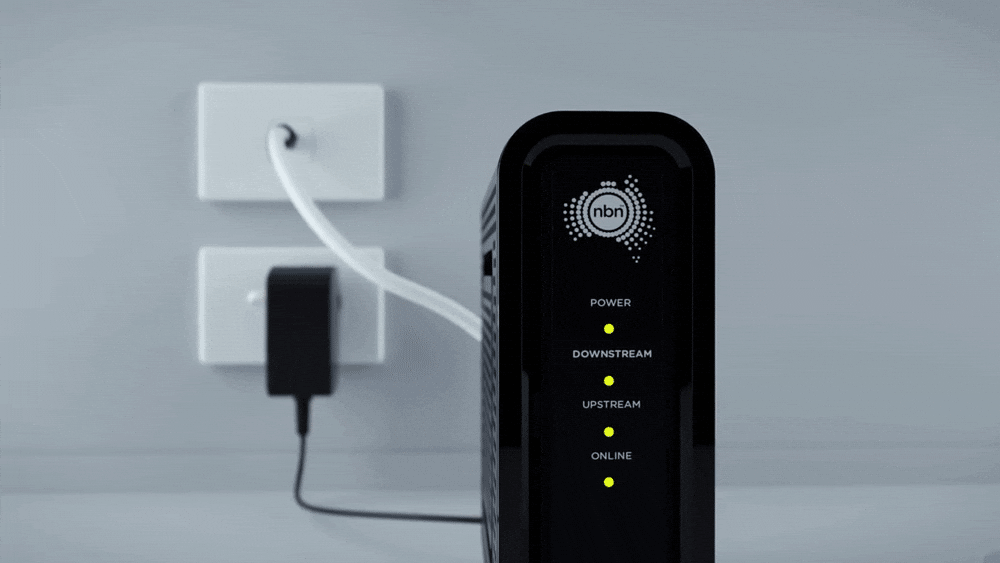
What Is HFC?
In today’s digital age, the significance of a reliable broadband connection cannot be overstated. Among the technologies that have made a marked impact in this domain, especially in select metropolitan areas, is the HFC (Hybrid Fibre-Coax) network. Known for its adept use of radio frequency (RF) signalling and functioning within a bandwidth ranging from 5 MHz to 862 MHz, the HFC network offers unique advantages. This article delves into the nitty-gritty details of HFC, highlighting its distinct features and its role in contemporary connectivity solutions.
The HFC Network: An Examination
Also known as “Cable,” the HFC network primarily provides broadband internet services for the NBN, alongside pay TV services such as Foxtel. It complements, rather than replaces, traditional copper twisted-pair networks, offering a robust alternative for high-speed data and entertainment services.

Connecting Homes to the HFC Network
In the NBN HFC network, each residence is connected through a singular coaxial cable. This cable terminates at an “isolator” situated inside an external wall box, generally referred to as the “isolation box.” Importantly, the isolation box serves as more than a mere termination point; it can also house an RF splitter. This device differentiates the outlets designated for broadband internet from those meant for pay TV and can even accommodate multiple access points for pay-TV services.
Broadband Internet and the Role of Modems
To facilitate broadband services, a coaxial cable extends from the isolator or splitter in the isolation box to a coaxial “F-connector” located on a wall plate. This arrangement enables the attachment of a cable modem that encodes and decodes the RF signals. The modem subsequently allows connections to computers or broader networks through a router. Occasionally, these modems come integrated with wireless routers and are called “gateways.”
Key Points to Remember
- Demarcation Point: The “customer side” of the coaxial cable usually marks the “Isolation box” or the cable that connects to the input on the isolation devices. This demarcation point signifies the boundary of responsibility between the network provider and the customer.
- Multiple Connection Devices: Where twisted pair cabling is also installed—possibly for telephone services—distinct connection devices will appear on the external wall. These usually include an NTD (Network Termination Device) for the twisted pair cabling and the isolation box for the coaxial cable.
- Customer Equipment: While the gateway might initially be provided by the service provider as part of the broadband package, ownership and responsibility typically transition to the customer once the service contract or equipment warranty expires.
- Pay TV Access: Outlets designated for pay-TV services, such as Foxtel, should be directly connected from the isolation box to the location of the Set Top Unit, where the TV will be set up.

Network Architecture in Context to the NBN
The HFC technology is a critical component of Australia’s NBN, providing a fast and reliable broadband service to many households and businesses. The architecture of HFC networks is meticulously designed to amalgamate the high-speed data transmission capabilities of fibre-optic cables with the robustness and accessibility of coaxial cables. Here’s a breakdown of how this architecture is implemented within the NBN framework:
Central Office to Local Nodes:
- Fibre-Optic Backbone: The journey of data transmission begins at a central office where the NBN’s fibre-optic backbone resides. Fibre-optic cables, known for their high-speed data transmission rates, carry data over long distances to local nodes situated in various neighbourhoods. This part of the network is often referred to as the “backhaul” and it ensures minimal data loss and high-speed transmission from the central office to local nodes.
Local Nodes to Individual Premises:
- Coaxial Connections: Once the data reaches the local nodes, it is then transmitted to individual premises via coaxial cables. These cables are used for the “last mile” of the network, providing a robust and reliable connection to homes and businesses. The coaxial cables are capable of delivering high-speed internet, making them an integral part of the NBN’s HFC network.
Scalability and Flexibility:
- Network Expansion: The architecture of the HFC networks within the NBN framework allows for a significant degree of scalability and flexibility. As the demand for higher bandwidth and faster internet grows, the network can be expanded or upgraded without a complete overhaul. This is crucial for meeting the evolving broadband needs of the Australian population.
- Bandwidth Capacity: The combination of fibre-optic and coaxial cables allows for an increase in bandwidth capacity as and when needed. Service providers can enhance the network’s bandwidth capacity by upgrading the technology at the central office or local nodes, or even by splitting nodes to reduce the number of homes served by a single node, thereby increasing the available bandwidth per home.
Technical Specifications of HFC Networks
HFC, standing for Hybrid Fibre-Coaxial, is a broadband network technology that seamlessly combines the high-speed data transmission capabilities of fibre-optic cables with the widespread availability and robustness of coaxial cables. Below are some key technical aspects of HFC networks:
Data Transmission Rates:
- HFC networks are known for their high-speed data transmission, with capabilities to support broadband services that offer speeds up to 1 Gbps or higher. The exact speed can vary based on the infrastructure and the service provider.
Types of Cables Used:
- Fibre-Optic Cables: These cables are made of glass or plastic fibres and are capable of transmitting data at the speed of light. They are used in the backbone of HFC networks to transmit data over long distances with minimal loss.
- Coaxial Cables: Coaxial cables are used for the “last mile” connections to homes and businesses. They are robust, shielded cables that can transmit electrical signals with a high degree of fidelity over shorter distances.
Network Architecture:
- The architecture of HFC networks is designed to leverage the strengths of both types of cables. Data is transmitted over long distances using fibre-optic cables from the central office to local nodes in neighbourhoods. From these nodes, coaxial cables carry the data to individual premises.
- This architecture allows for a high degree of scalability and flexibility, enabling service providers to expand the network and increase bandwidth capacity as demand grows.
Modulation and Multiplexing:
- Advanced modulation schemes like Quadrature Amplitude Modulation (QAM) and Orthogonal Frequency-Division Multiplexing (OFDM) are used to maximize the amount of data that can be transmitted over the coaxial portion of the network.
- These technologies allow multiple signals to share the same physical medium, thereby increasing the overall capacity and speed of the network.
Upstream and Downstream Channels:
- HFC networks have separate channels for upstream (from the user to the network) and downstream (from the network to the user) data transmission. This separation ensures a reliable and consistent data transmission experience for users.
Node Splitting:
- As the demand for bandwidth grows, service providers can perform node splitting to reduce the number of homes served by a single node, thereby increasing the available bandwidth per home.
DOCSIS Technology:
- Data Over Cable Service Interface Specification (DOCSIS) is a key technology used in HFC networks to ensure reliable, high-speed data transmission over coaxial cables. Latest versions like DOCSIS 3.1 further enhance the speed and efficiency of HFC networks.
Maintenance and Troubleshooting of HFC Networks
Maintaining the health of an HFC network and troubleshooting issues promptly is crucial for uninterrupted service. Users may encounter various problems, some of which can be resolved personally while others might require professional intervention. Below we outline common issues, troubleshooting steps, and how a professional service like SECURE A COM can provide expert assistance:
Common Issues:
- Internet Dropouts: Intermittent connection or internet dropouts are common issues. These could be due to network congestion, signal interference, or problems with the home wiring or equipment.
- Slow Internet Speed: Users may experience slower speeds due to network congestion, especially during peak usage times, or issues within the home network.
- Weak WiFi Signals: While not a direct issue with the HFC network, weak WiFi signals can affect the user’s broadband experience.
Basic Troubleshooting Steps:
- Restart Equipment: Often, restarting the modem or router can resolve many common network issues.
- Check Cables and Connections: Ensure that all cables are securely connected and free from damage.
- Test with a Different Device: This can help determine whether the issue is with a specific device or the network itself.
- Check for Outages: Verify if there is a known network outage affecting your area.
Professional Intervention: SECURE A COM
When basic troubleshooting doesn’t resolve the issue, or the problem is identified to be with the internal wiring or connections, it’s time to call in the experts.
- Expertise in HFC Troubleshooting: SECURE A COM has extensive experience in diagnosing and repairing issues with HFC networks. Their technicians are adept at identifying problems whether they are within the user’s premises or in the network leading to the premises.
- NBN Fault Finding: As one of the best NBN fault-finding services in Sydney, SECURE A COM excels in locating and repairing NBN internet faults within the customer’s private cabling.
- Comprehensive Services: Besides troubleshooting, SECURE A COM provides a wide range of installation services including NBN socket installations, NBN socket relocations, MDF Jumpering, NBN Lead-In Cabling, and Data cabling services.
- Customer Advocacy: If issues are found within the NBN network, SECURE A COM assists the customer with their ISP by providing a full report, ensuring that the ISP can have an NBN contractor rectify the fault.
- Contact: Reach out to SECURE A COM via phone at 02 9188 1577 or find out more about our professional Internet technician service. for professional assistance with HFC and other NBN-related issues.
By following the basic troubleshooting steps or engaging with professional services like SECURE A COM for more complex issues, users can ensure a reliable and smooth broadband experience on the HFC network.
Final Thoughts
The HFC network stands as a testament to advancements in both broadband and pay-TV services. Its sophisticated architecture ensures that users benefit from a stable and uninterrupted connection, whether for internet browsing or pay TV entertainment. Understanding the specific details of how the HFC network functions will empower consumers to make the most of their digital experiences.

Jason Kearney
Head Internet Technician
Jason Kearney is the Head Technician at SECURE A COM, with qualifications spanning NBN, ADSL, phone, and data cabling. Starting as an electrician, Jason quickly delved into the telecommunications sector, leading crucial projects like the rehabilitation of the Telstra network. With credentials in both managerial and technical aspects, he now specialises in phone line and NBN fault location and repair, serving both homes and businesses with effective and personalised telecommunications solutions


